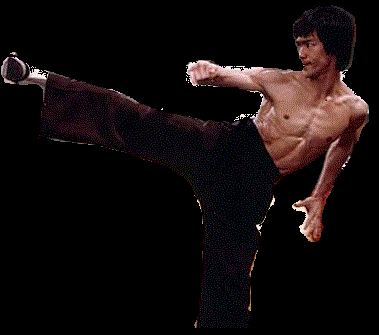Aikido
Aikido (Japanese: 合気道 Hepburn: Aikidō) [a.i.ki.doː] is a Japanese martial art developed by Morihei Ueshiba as a synthesis of his martial studies, philosophy, and religious beliefs. Aikido is often translated as "the Way of unifying (with) life energy" or as "the Way of harmonious spirit." Ueshiba's goal was to create an art that practitioners could use to defend themselves while also protecting their attacker from injury.
Aikido is performed by blending with the motion of the attacker and redirecting the force of the attack rather than opposing it head-on. This requires very little physical strength, as the aikidōka (aikido practitioner) "leads" the attacker's momentum using entering and turning movements. The techniques are completed with various throws or joint locks.
Aikido derives mainly from the martial art of Daitō-ryū Aiki-jūjutsu, but began to diverge from it in the late 1920s, partly due to Ueshiba's involvement with the Ōmoto-kyō religion. Ueshiba's early students' documents bear the term aiki-jūjutsu.
Ueshiba's senior students have different approaches to aikido, depending partly on when they studied with him. Today aikido is found all over the world in a number of styles, with broad ranges of interpretation and emphasis. However, they all share techniques learned from Ueshiba and most have concern for the well-being of the attacker.
History:
Aikido was created by Morihei Ueshiba, referred to by some aikido practitioners as Ōsensei ("Great Teacher"). Ueshiba envisioned aikido not only as the synthesis of his martial training, but as an expression of his personal philosophy of universal peace and reconciliation. During Ueshiba's lifetime and continuing today, aikido has evolved from the Aiki that Ueshiba studied into a wide variety of expressions by martial artists throughout the world.
Initial development:
Takeda Sōkaku
Ueshiba developed aikido primarily during the late 1920s through the 1930s through the synthesis of the older martial arts that he had studied. The core martial art from which aikido derives is Daitō-ryū aiki-jūjutsu, which Ueshiba studied directly with Takeda Sōkaku, the reviver of that art. Additionally, Ueshiba is known to have studied Tenjin Shin'yō-ryū with Tozawa Tokusaburō in Tokyo in 1901, Gotōha Yagyū Shingan-ryū under Nakai Masakatsu in Sakai from 1903 to 1908, and judo with Kiyoichi Takagi (高木 喜代子 Takagi Kiyoichi, 1894–1972) in Tanabe in 1911.
The art of Daitō-ryū is the primary technical influence on aikido. Along with empty-handed throwing and joint-locking techniques, Ueshiba incorporated training movements with weapons, such as those for the spear (yari), short staff (jō), and perhaps the bayonet (銃剣 jūken). However, aikido derives much of its technical structure from the art of swordsmanship (kenjutsu).
Ueshiba moved to Hokkaidō in 1912, and began studying under Takeda Sokaku in 1915. His official association with Daitō-ryū continued until 1937.[9] However, during the latter part of that period, Ueshiba had already begun to distance himself from Takeda and the Daitō-ryū. At that time Ueshiba was referring to his martial art as "Aiki Budō". It is unclear exactly when Ueshiba began using the name "aikido", but it became the official name of the art in 1942 when the Greater Japan Martial Virtue Society (Dai Nippon Butoku Kai) was engaged in a government sponsored reorganization and centralization of Japanese martial arts.
Weapons:
Weapons training in aikido traditionally includes the short staff (jō), wooden sword (bokken), and knife (tantō). Today, some schools incorporate firearm-disarming techniques. Both weapon-taking and weapon-retention are sometimes taught, to integrate armed and unarmed aspects. Others, such as the Iwama style of Morihiro Saito, usually spend substantial time with bokken and jō, practised under the names aiki-ken, and aiki-jō, respectively.
The founder developed much of empty handed aikido from traditional sword and spear movements. Consequently, the practice of these movements both gives insight into the origin of techniques and movements, and reinforces the concepts of distance, foot movement, presence and connectedness with one's training partner(s).





